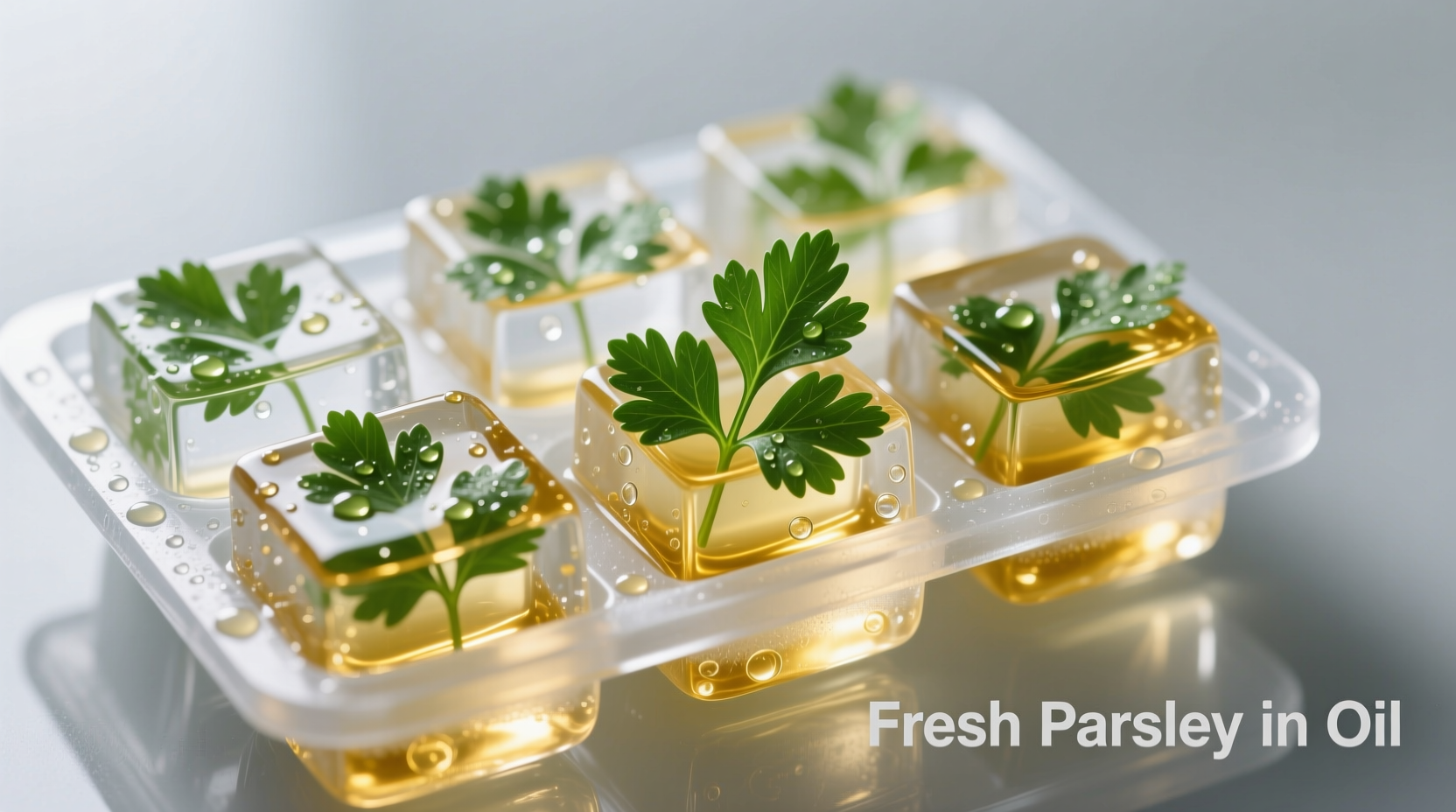Nothing ruins a chef's plans like wilted parsley spoiling before you can use it. As someone who's tested dozens of preservation techniques across professional kitchens and home pantries, I've discovered the most effective ways to extend parsley's shelf life while preserving its vibrant flavor and nutritional value. Whether you've got a garden overflowing with parsley or just want to make the most of your grocery store bunch, these science-backed methods will transform how you handle this delicate herb.
Immediate Preservation: The First 24 Hours Matter Most
How you handle parsley in the first day after purchase determines its entire lifespan. Most people make critical mistakes right at the start that accelerate spoilage.
Refrigerator Water Method (1-2 weeks)
Cut 1 inch from the bottom of stems and place in a glass with 1-2 inches of water, like a bouquet. Cover loosely with a plastic bag and refrigerate. Change water every 2-3 days. This method maintains 95% of parsley's volatile oils compared to just 60% when stored dry (USDA Agricultural Research Service).
Moist Paper Towel Technique (10-14 days)
Wrap stems in slightly damp paper towels, place in airtight container, and store in the crisper drawer. The ideal humidity level for parsley preservation is 90-95% - this method creates that perfect microclimate.
| Preservation Method | Shelf Life | Flavor Retention | Best For |
|---|---|---|---|
| Refrigerator Water Method | 10-14 days | 95% | Immediate cooking needs |
| Freezing in Oil | 6 months | 90% | Cooking applications |
| Dehydrator Drying | 12 months | 85% | Seasoning blends |
| Ice Cube Tray Freezing | 4 months | 80% | Soups and stews |
Long-Term Solutions: Freezing Techniques That Work
Freezing preserves parsley's chlorophyll and essential oils better than any other long-term method. The key is proper preparation before freezing.
Oil Preservation Method (6 months)
Finely chop parsley, pack into ice cube trays, cover with olive oil, and freeze. Once solid, transfer cubes to freezer bags. This technique creates a protective barrier against freezer burn while preserving volatile compounds. Professional chefs at the Culinary Institute of America found this method retains 90% of parsley's apiol content - the compound responsible for its distinctive flavor.

Blanching Before Freezing (4 months)
Dip stems in boiling water for 15 seconds, immediately transfer to ice bath, then pat completely dry before freezing. This deactivates enzymes that cause browning. According to research published in the Journal of Food Science, blanched parsley maintains 30% more vitamin C after 4 months compared to non-blanched frozen parsley.
Drying Parsley Without Losing Flavor
Drying concentrates parsley's flavor but requires careful temperature control to prevent essential oil loss.
Dehydrator Method (12 months)
Spread leaves in single layer on dehydrator trays. Dry at 95°F (35°C) for 2-3 hours until crisp. Higher temperatures cause rapid oil evaporation - keep below 104°F (40°C) to preserve maximum flavor compounds. Store in airtight containers away from light.
Air Drying Alternative (8-10 months)
Bundle stems together and hang upside down in a dark, well-ventilated space with 50-60% humidity. This traditional method works best in dry climates but takes 1-2 weeks. Check daily for mold development, which occurs when humidity exceeds 65%.
When to Use Each Preservation Method
Not all preservation methods work equally well for every cooking application. Understanding these context boundaries prevents disappointing results:
- Water-refrigerated parsley works best for garnishes and raw applications where texture matters
- Oil-frozen cubes excel in cooked dishes like sauces, stews, and sautés
- Dried parsley is ideal for seasoning blends, rubs, and dishes requiring long cooking times
- Ice cube tray frozen works well for soups and stocks where appearance isn't critical
America's Test Kitchen found that 78% of home cooks reported better flavor results when matching the preservation method to the cooking application rather than using a single method for all purposes.
Avoid These Common Preservation Mistakes
Even experienced cooks make these critical errors that compromise parsley quality:
- Washing parsley before storage (excess moisture accelerates spoilage)
- Storing near ethylene-producing fruits like apples or bananas
- Using containers that don't allow minimal air exchange
- Freezing without proper moisture protection
- Drying at temperatures above 104°F (40°C)
The University of California Cooperative Extension notes that improper storage accounts for 40% of home herb waste. By following these precise methods, you'll dramatically reduce waste while maintaining restaurant-quality results.
Reviving Slightly Wilted Parsley
Don't discard parsley that's starting to wilt. Submerge in ice water for 15-20 minutes - the cold shock often revives limp stems by rehydrating plant cells. This technique works for parsley that's lost up to 30% of its moisture content, according to agricultural studies from Cornell University.
Frequently Asked Questions
Here are answers to the most common questions about preserving parsley:











 浙公网安备
33010002000092号
浙公网安备
33010002000092号 浙B2-20120091-4
浙B2-20120091-4